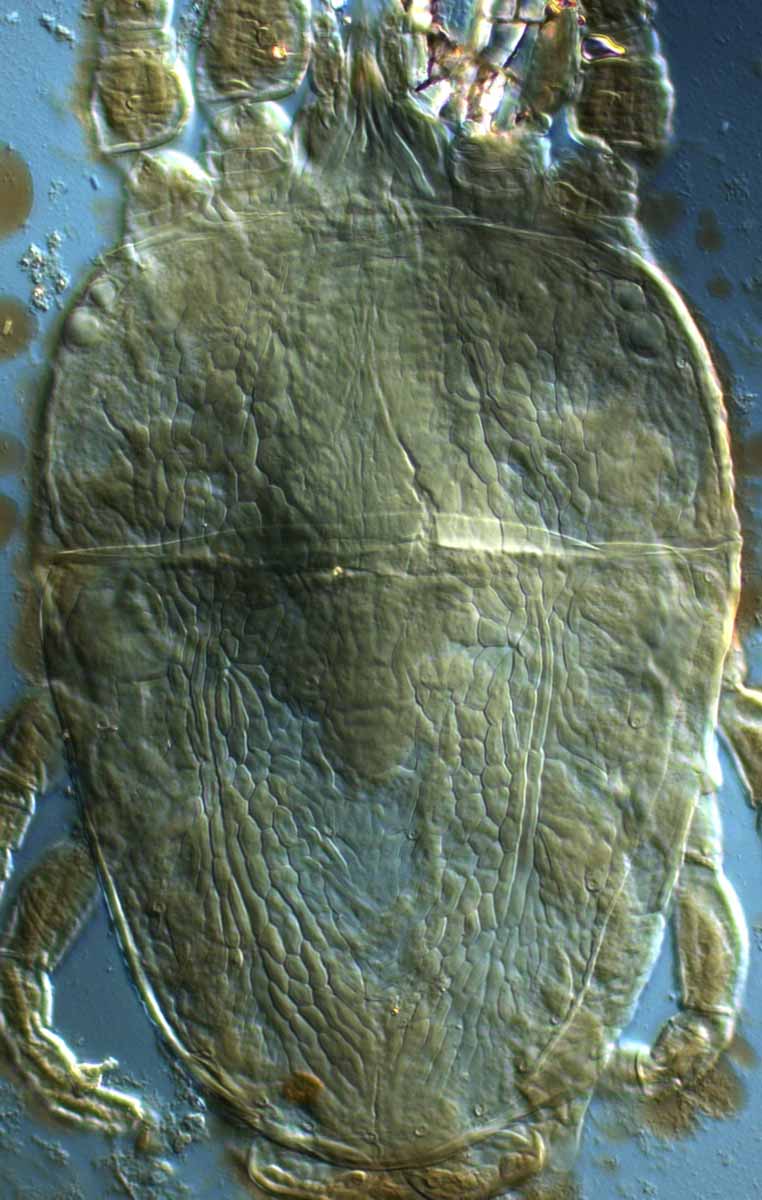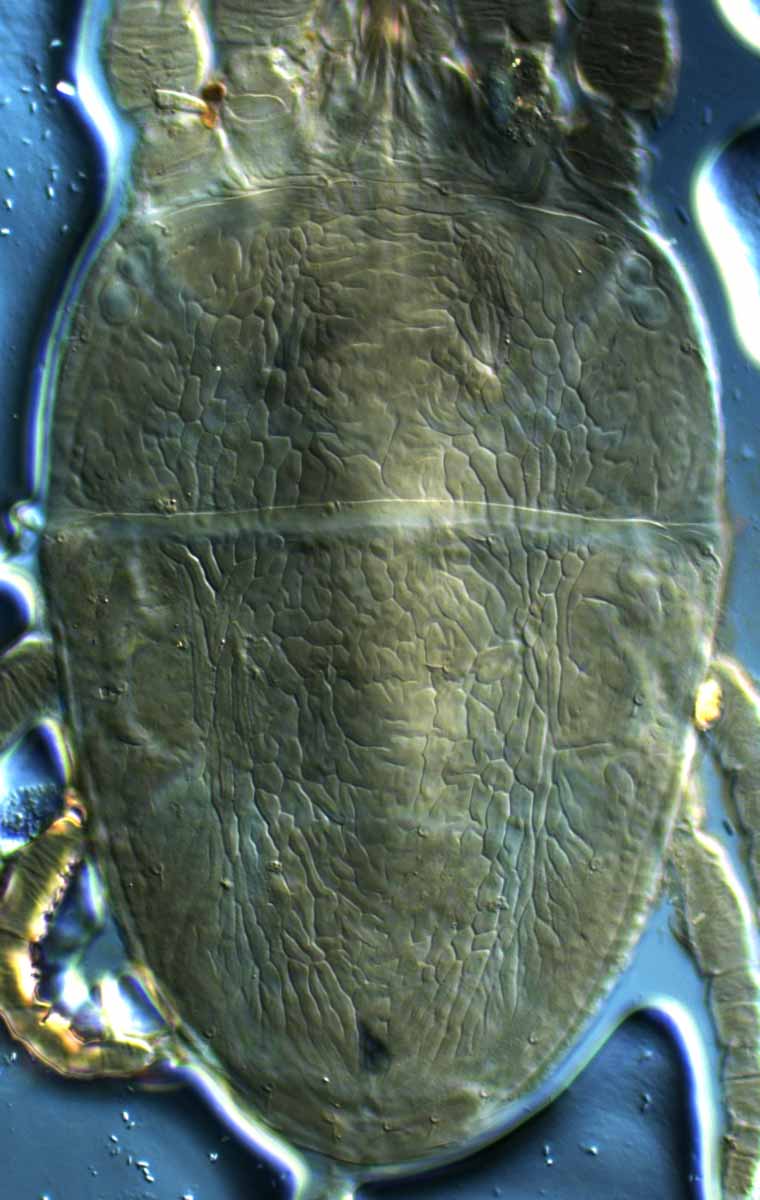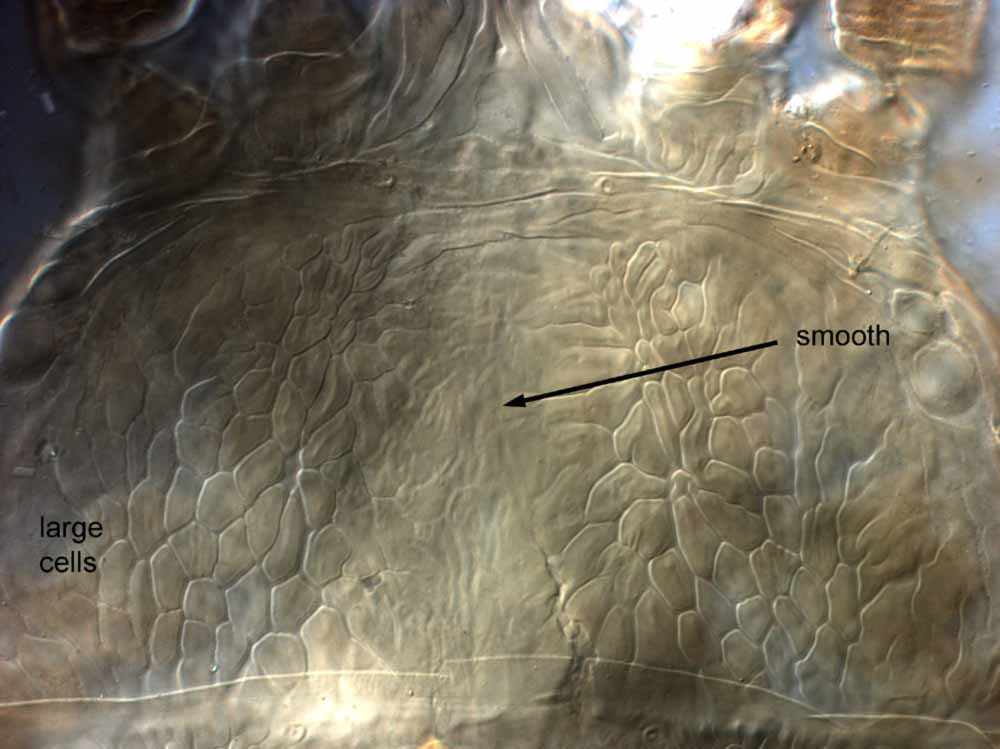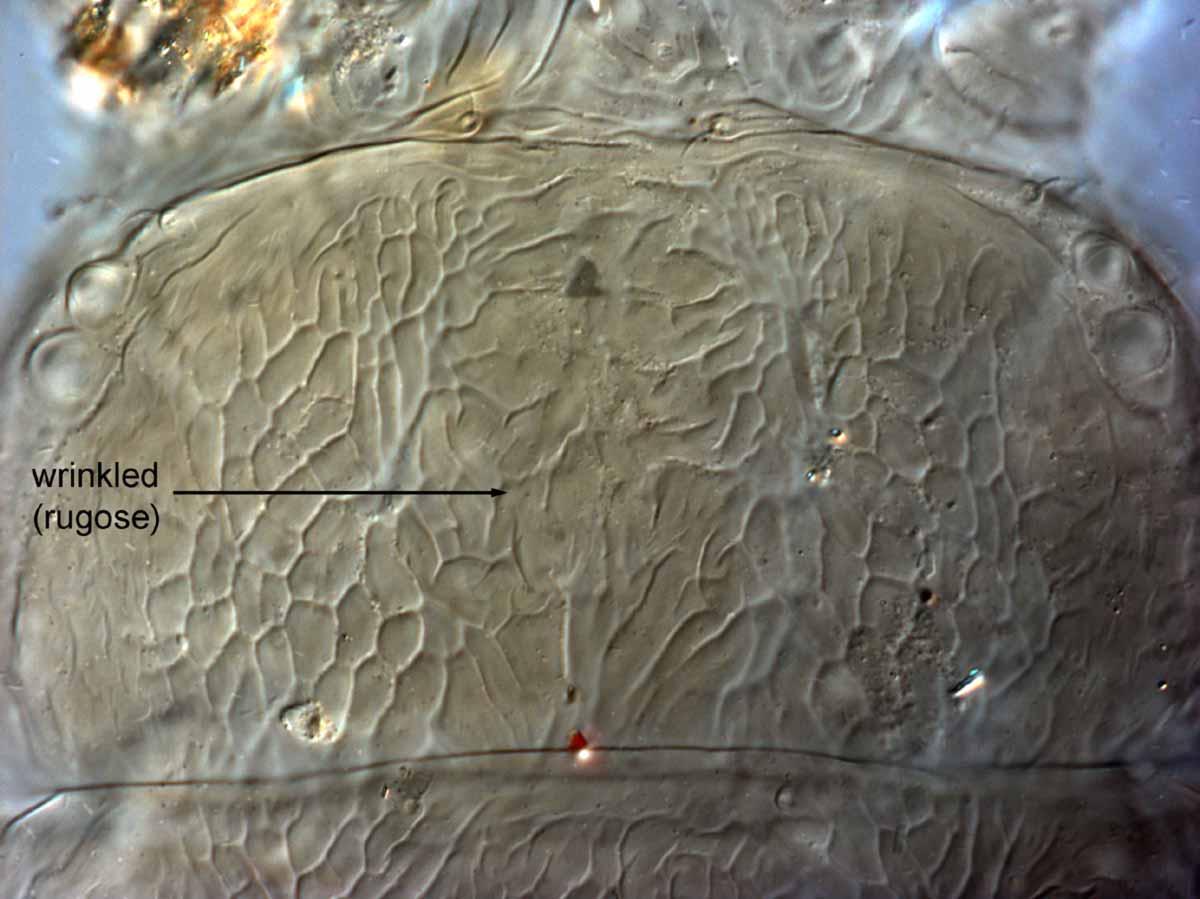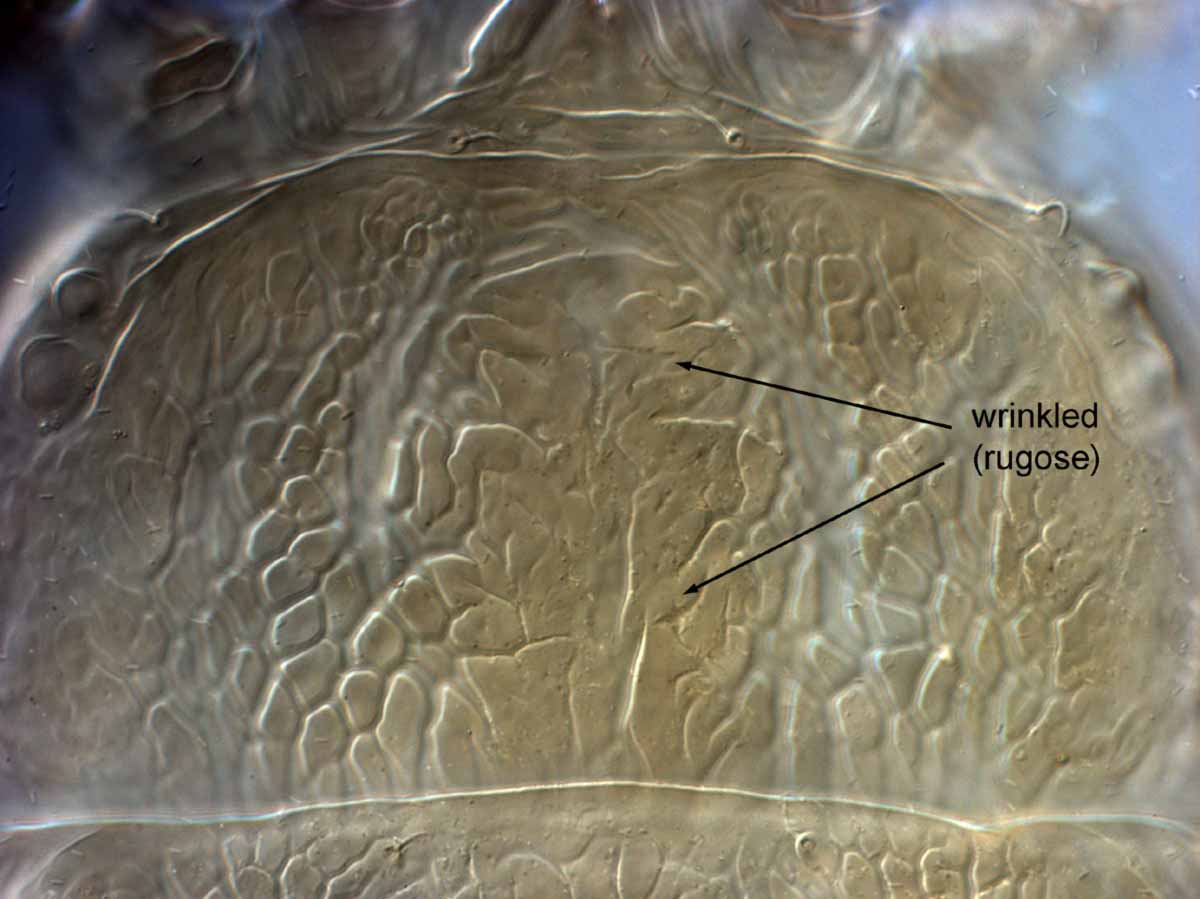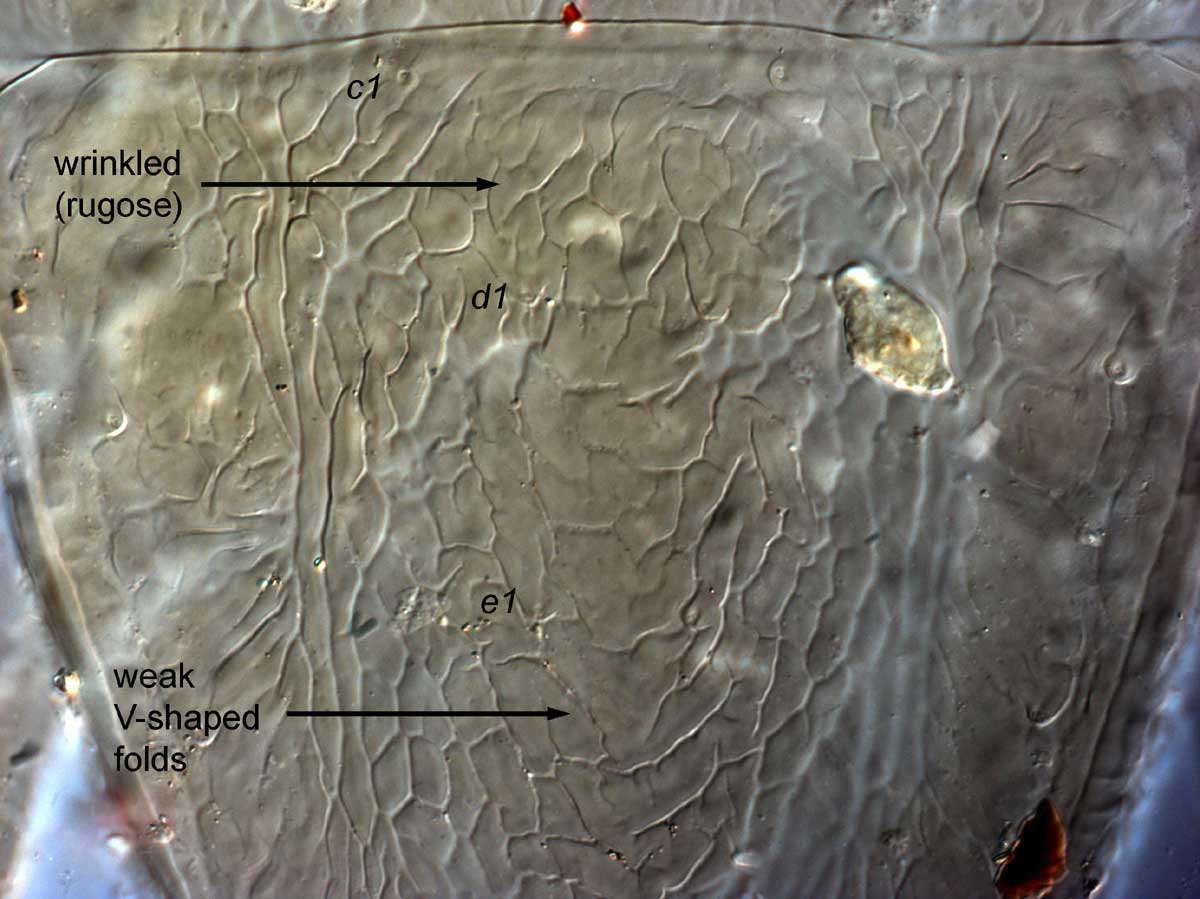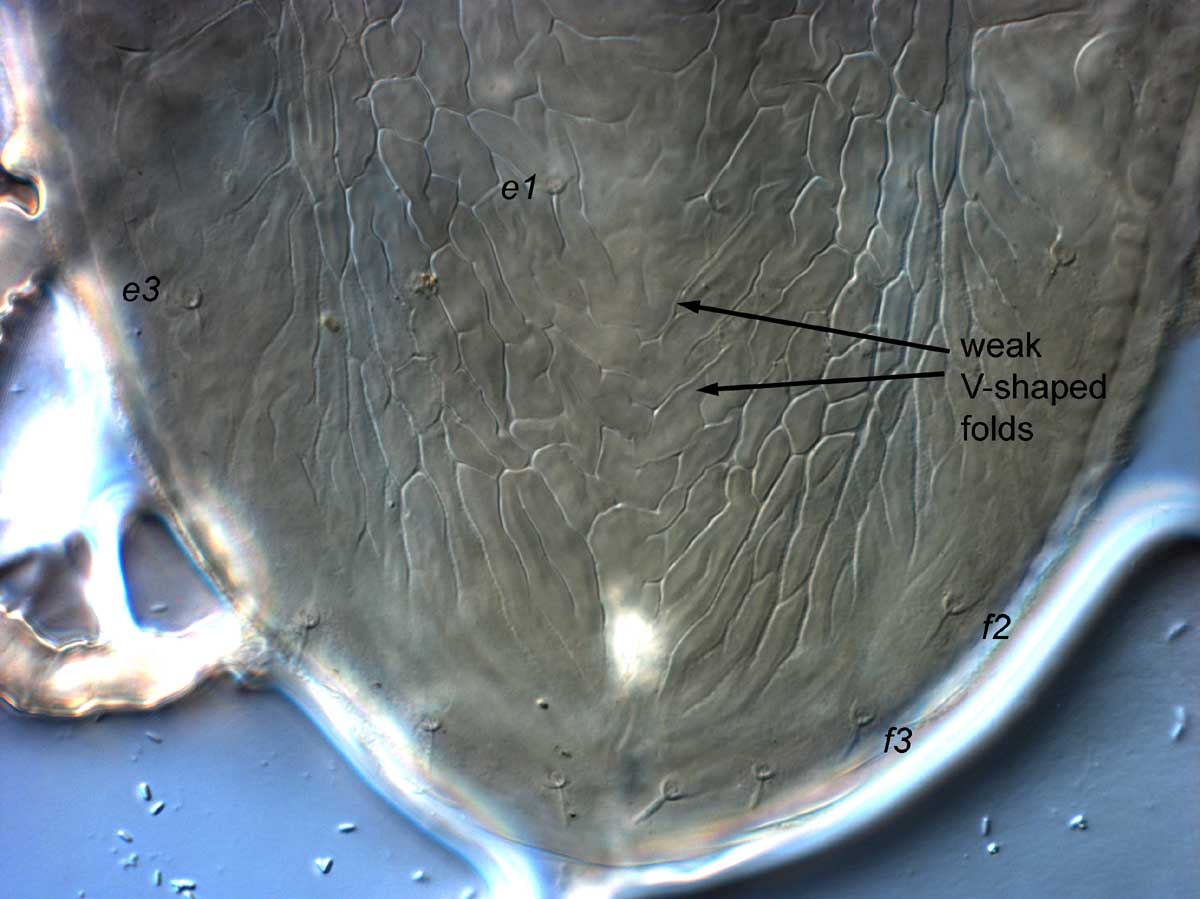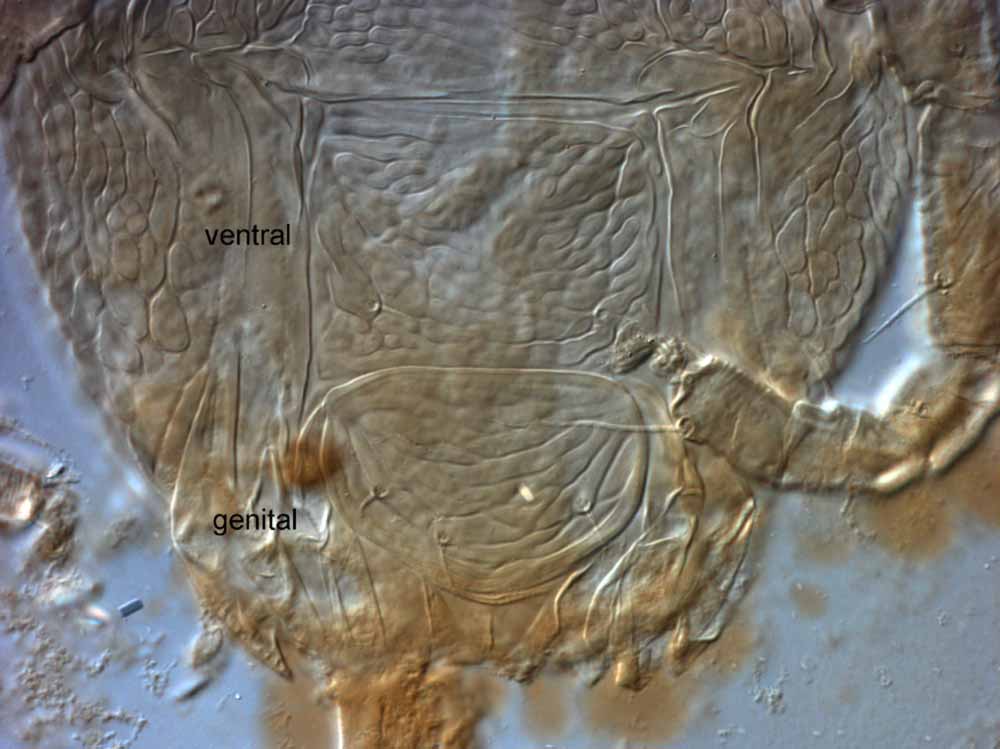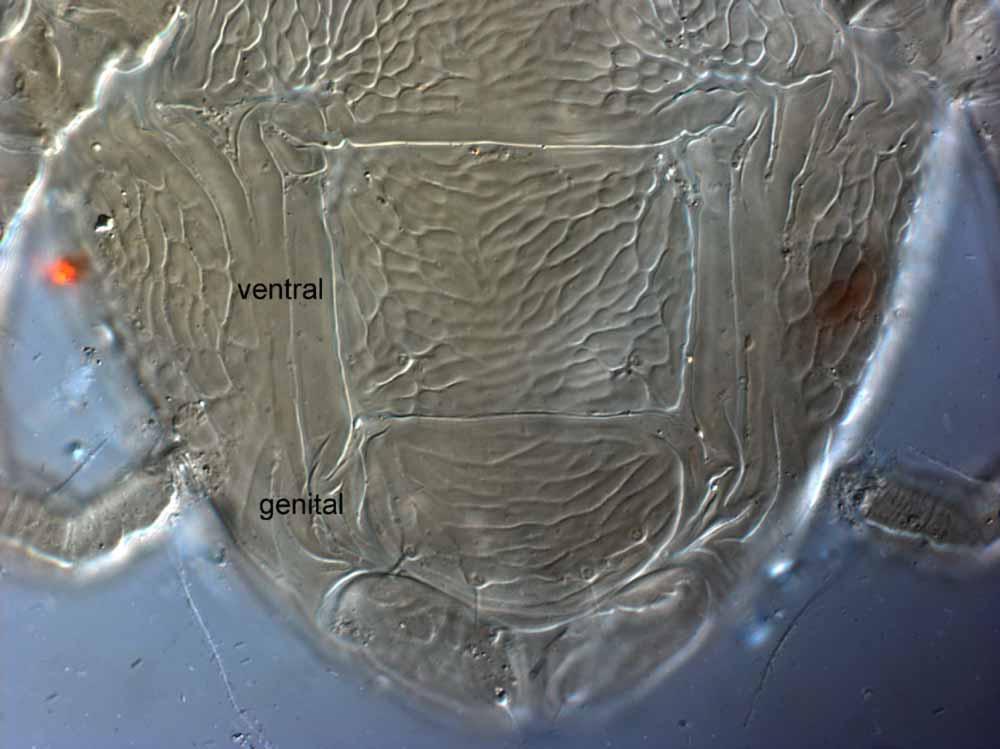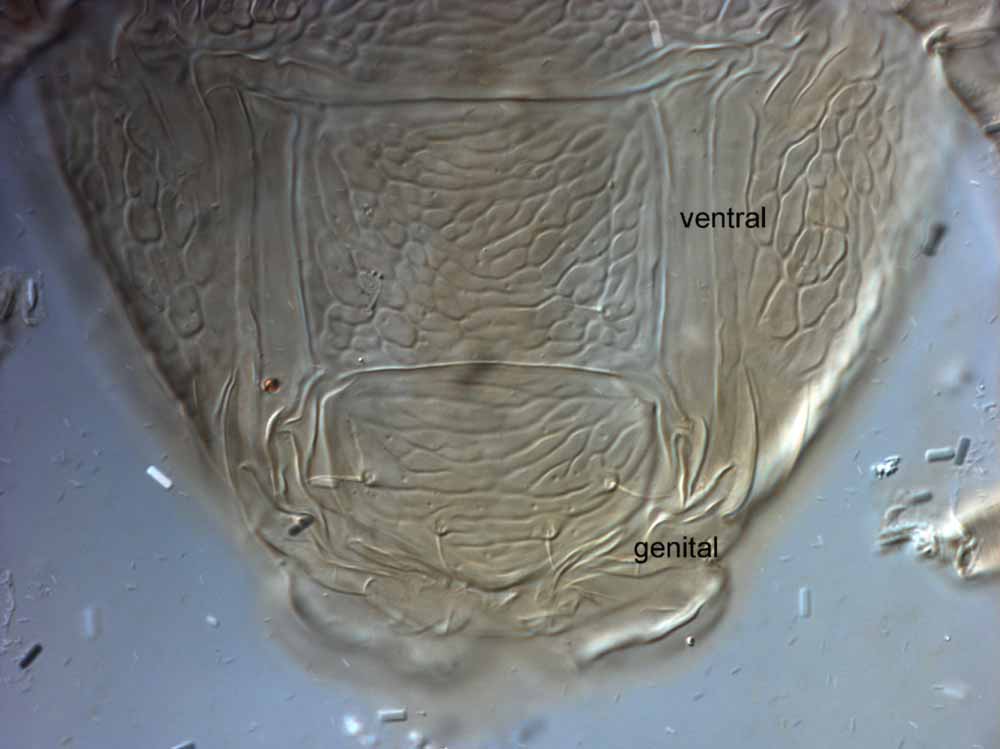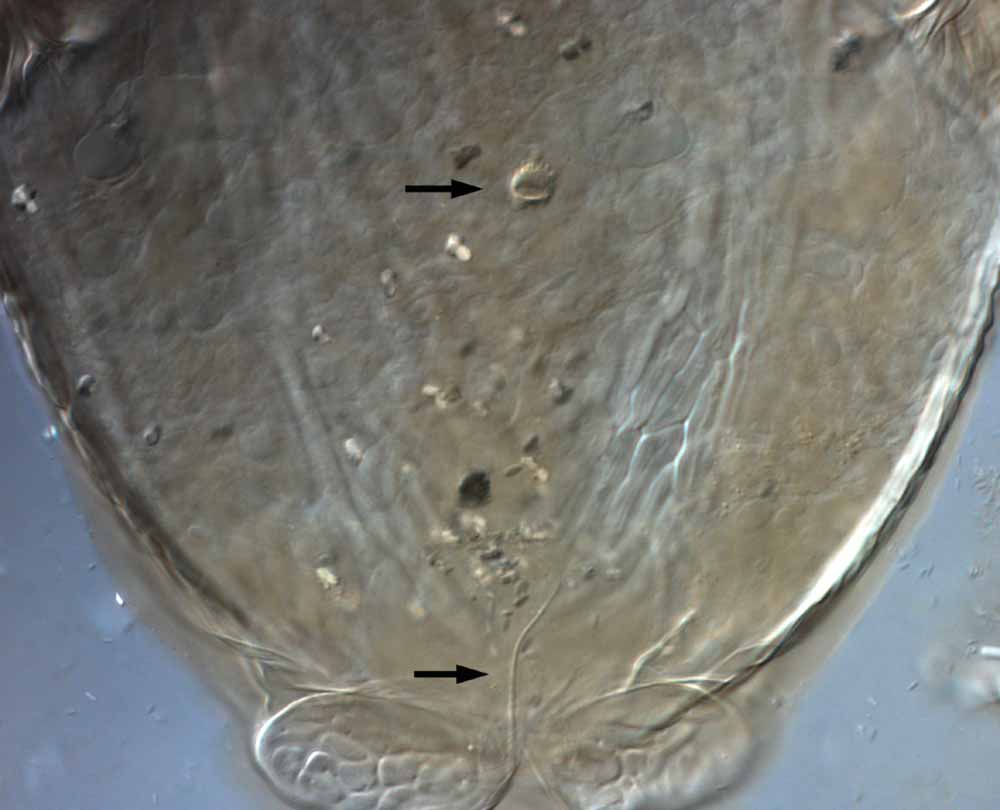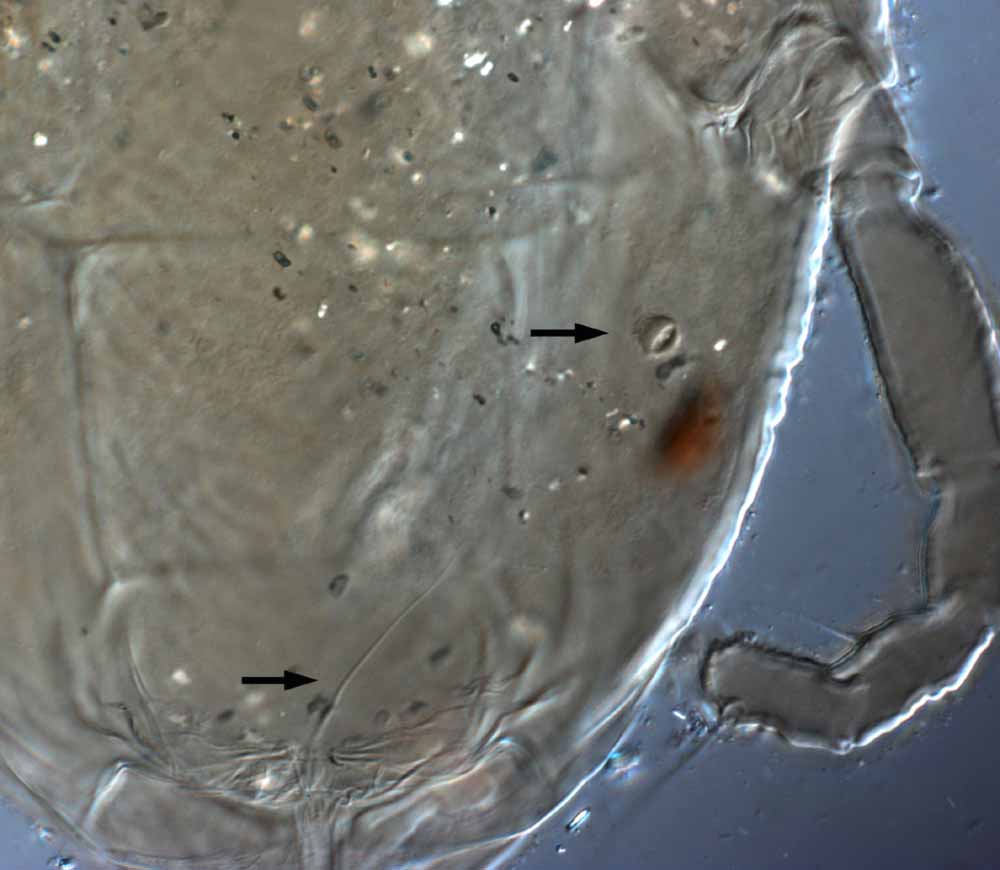Brevipalpus californicus sensu stricto
|
Fig. 1. Brevipalpus californicus sensu stricto, female dorsum (holotype specimen). |
|
Fig. 2. Brevipalpus californicus sensu stricto, female dorsum (paratype specimen). |
|
Fig. 3. Brevipalpus californicus sensu stricto, female prodorsum (holotype specimen). |
|
Fig. 4. Brevipalpus californicus sensu stricto, female prodorsum (paratype specimen). |
|
Fig. 5. Brevipalpus californicus sensu stricto, female prodorsum (paratype specimen). |
|
Fig. 6. Brevipalpus californicus sensuu stricto, female anterior dorsal opisthosoma (paratype specimen). |
|
Fig. 7. Brevipalpus californicus sensu stricto, female posterior dorsal opisthosoma (holotype specimen). |
|
Fig. 8. Brevipalpus californicus sensu stricto, female posterior dorsal opisthosoma (paratype specimen). |
|
Fig. 9. Brevipalpus californicus sensu stricto, female posterior venter (holotype specimen). |
|
Fig. 10. Brevipalpus californicus sensu stricto, female posterior venter (paratype specimen). |
|
Fig. 11. Brevipalpus californicus sensu stricto, female posterior venter (paratype specimen). |
|
Fig. 12. Brevipalpus californicus sensu stricto, female posterior opisthosoma indicating spermatheca and duct (see arrows) (paratype specimen). |
|
Fig. 13. Brevipalpus californicus sensu stricto, female posterior opisthosoma indicating spermatheca and duct (see arrows) (paratype specimen). |
Authority
(Banks)
Species group characters
B. californicus species group (sensu Baker & Tuttle 1987) = f2 present; tarsus II with 2 solenidia; palp 4-segmented with 3 distal setae; dorsal central setae (c1, d1, e1) different in shape to dorsal lateral setae (c3, d3, e3)
Characters
- opisthosomal setae f2 present (= 7 setae around opisthosomal margin)
- tarsus II with 2 solenidia distally (one antiaxial, one paraxial)
- prodorsum smooth to wrinkled (= rugose) centrally; with large closed cells laterally, forming reticulation (Figs. 1-5)
- dorsal opisthosoma cuticle between c1-c1 and e1-e1 smooth to weakly wrinkled (Figs. 1, 2, 6); cuticle posterior e1-e1 with a few short, transverse to weak chevrons (= V-shaped folds) (Figs. 6-8)
- ventral plate with medium to small rounded-circular cells (Figs. 9-11)
- genital plate with transversely elongate cells, sometimes forming weak transverse bands (Figs. 9-11)
- spermatheca usually a long strong, relatively thick duct, beginning at genital opening between anal plates and genital plate, ending in a rounded vesicle with a crown of short finger-like projections along dorsal margin (Figs. 12-13)
- spermathecal vesicle has a distinct clear "bubble" visible internally; the vesicle is generally quite visible, and is often located near coxae IV
- palp femur seta thin, tapered, barbed
- palp tarsus with 3 setae
- trochanter III with 2 setae
Distribution based on confirmed specimens
USA (*CA)
* = holotype
Hosts based on confirmed specimens
orange (Rutaceae)
Remarks
Note: Brevipalpus californicus sensu stricto is based on the type specimens of B. californicus.
Summary of differences between B. californicus s.s. and B. californicus species group species B & C:
Prodorsum
Bc s.s. smooth to wrinkled (rugose) centrally with large closed cells laterally, forming reticulation
Bc sp. B entirely reticulate, with large closed cells; central reticulation usually weak, but cells are usually closed; occasionally central cells fuse to form larger cells
Bc sp. C entirely reticulate, with even cells
Cuticle posterior to e1-e1
Bc s.s. with a few short, transverse to weak chevrons (= V-shaped folds)
Bc sp. B wrinkled, may have a few short, weak chevrons (= V-shaped) to transverse folds
Bc sp. C reticulate
Ventral plate
Bc s.s. with medium to small rounded-circular cells
Bc sp. B with medium to large rounded cells
Bc sp. C with medium rounded cells
Genital plate
Bc s.s. with transversely aligned elongate cells; sometimes forming transverse bands
Bc sp. B with transversely aligned elongate cells; sometimes forming transverse bands
Bc sp. C with medium rounded cells
References
Banks (1904) = original description

